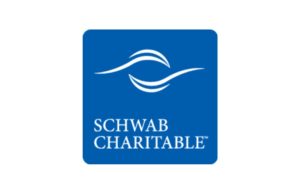Most nonprofits are seeing lower response rates in direct mail acquisition efforts and many are wondering whether they would be better off cutting back on donor acquisition. An organization that decides to postpone its acquisition program will certainly save money in the short run. But in the long run, revenue will be lost that can never be regained.
When an organization stops acquiring donors for some period of time several things happen. Nonprofits that lose money in acquisition will see a short-term savings. But by failing to acquire new donors they may face lower revenue from their house files for many years to come.
On average, about 20% of the donors that are acquired in a given year will still be contributing to an organization in five years’ time. This is what makes donor acquisition an investment. The five-year value of a group of donors having an average contribution of $20 is $80 to $90 per donor acquired. Therefore, cutting a campaign that could acquire 5,000 new donors will result in a loss of $400,000 to $450,000 in future income.
Without new donors a house file will decrease in size and in revenue production. If this, in turn, leads to a reduction in the money budgeted for acquisition the next year, it can be a considerable length of time before a house file reaches the level it was prior to the disruption of donor acquisition.
If you are under pressure to cut back on acquisition, here are a few suggestions:
- First and foremost, try to keep acquisition at a level that will maintain the current number of active donors. This should ensure that your direct mail revenue remains stable because house file performance has not suffered the recent declines that acquisition performance has.
- Mail your acquisition appeals during the months when response rates are historically highest. For the first half of the calendar year, for example, the months from February through May are generally better for acquisition campaigns than June and July.
- If you must cut your acquisition budget, do so by dropping the poorest performing lists from your campaigns. Rank your list performance by cost to raise a dollar or net income per piece mailed and determine how much savings you can achieve by cutting the bottom third of the lists.
- Mail as many multi-buyers as possible and mail them as many times as possible. If you have prospect names that have come from three different sources you may mail them three times. During the merge/purge process the number of times a name appears can be added to the multi-buyer file.
- Talk to your list broker about re-using names from better performing lists. This can save money in list rental with little or no impact on performance. Also, make sure your list broker has negotiated the best possible net name arrangements for you. If you are retaining only 30% of the names from a list you should not be in a 70% net name arrangement.
- If you have not been mailing long-lapsed donors, add them to your acquisition campaigns. In addition, warm prospects (donors from special events or other campaigns) may perform well in direct mail acquisition.
- If you are fortunate to have corporate partnerships ask these partners if they have consumer names that could be made available to you.
- Try to decrease the cost of your acquisition packages. Test the effect of excluding expensive inserts or four-color art.
Rather than making immediate, drastic cuts in donor acquisition, determine how you can decrease your acquisition costs without endangering your future direct mail revenue.
*** Don Austin is vice president of client strategy at May Development Services in Greenwich, Conn. His email is [email protected]
***
This article is from NPT Weekly, a publication of The NonProfit Times.
Subscribe to The NPT Weekly eNewsletter or any of our other enewsletters and get the latest news and ideas related to fundraising delivered to your inbox










